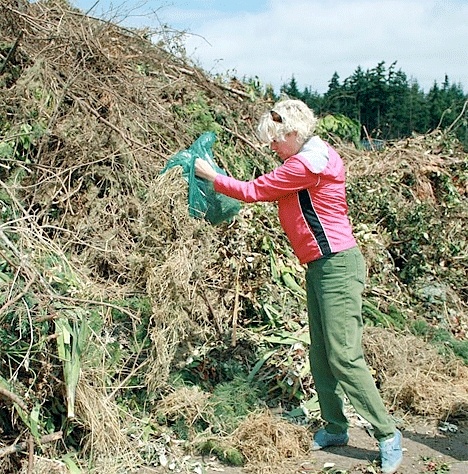By Scott Chase
WSU Extension
Summertime is when your yard and garden maintenance can turn into an almost full-time job, particularly when it comes to taking care of the lawn, shrub and tree waste. Hopefully you use a mulching lawn mower so you have no grass to dispose of, and that you are able to put your leaves, dead flowers, prunings, and other small garden waste into your compost bin. (To learn more about composting, go to the WSU Waste Wise website, http://www.wastewise.wsu.edu/). When the amount collected becomes too much to cope with, you sometimes need to look for other methods of disposal.
If you have small branches to get rid of, you might think about renting, borrowing, or buying a chipper-shredder, which you can use to produce valuable mulch. You can also leave branches in a pile to provide habitat for birds and other wildlife; see how at http://www.birdwatching.com/tips/brushpile.html.
Some folks get a permit and burn their yard waste where it’s allowed and when there isn’t a burn ban in effect. This option can be hazardous, though, as each ton of vegetation that is burned emits 180 pounds of fine particles, nitrogen oxides, carbon monoxide, and volatile organic compounds into the air. For shoreline residents, dumping yard waste onto the beach or over the bluff can not only be illegal, according to Island County Code 8.08B.080, but can cause slides and erosion, as well as smothering and killing marine life in a variety of ways. So how can you safely get rid of your yard waste on Whidbey?
One alternative is to drop off your yard waste at Island County’s transfer station on Highway 20 south of Coupeville. The cost is $76 per ton, which is much less than the $110 per ton charged for regular solid waste. The yard waste must be “clean,” meaning it can’t include plastic plant pots, wire fencing, plastic bags, rocks, etc. – only what you had growing in your yard. Remember to ‘cover your load’ to avoid the Uncovered Load Fees charged at transfer stations.
If you live in the city of Oak Harbor, you can have a 95 gallon yard waste roll cart delivered by contacting the city utilities office at 279-4530. From Dec. 1 to Feb. 28, pickup is on the first week of the month on your regular pickup day, at a cost of $6.50 every two months. From March 1 to Nov. 30, yard waste is picked up weekly on your regular pickup day, at a cost of $19.44 every two months. You also have the option of buying pre-paid city yard waste bags for leaves, grass and small branches. These are $3.50 each, and can be bought at City Hall, Safeway, Saar’s Market Place Grocery Store and Albertsons.
Another option in Oak Harbor (but available to everyone) is to take your green waste to Mailliard Landing Nursery. They accept clean brush and grass clippings (no dirt, rocks, etc) at $10 per cubic yard, with no size limit. Sheet rock and clean construction debris can be dropped off for $20 per cubic yard. Call 679-8544 for details.
Scott Chase works with Janet Hall, WSU Waste Wise coordinator, with WSU Extension in Coupeville. His office is on Camano Island. Contact him at schase@wsu.edu.



